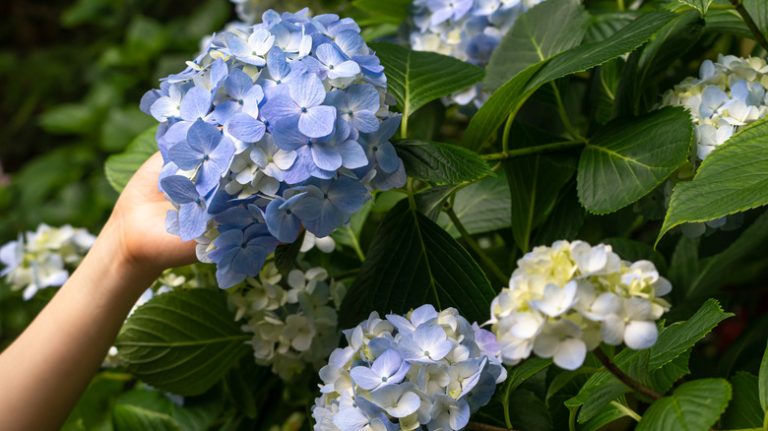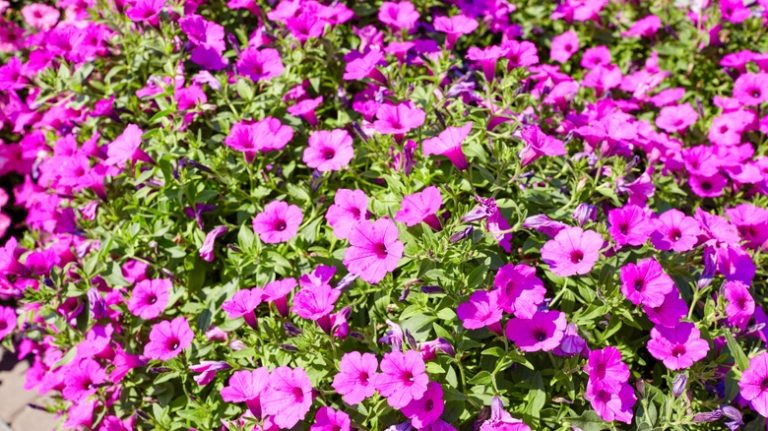Are you a gardener in search of a beautiful addition to your borders, beds, or pots? Look no further – pansies are the answer! With their full, showy flowers and a wide variety of colours, these universal winners are ready to bring some promotion to your garden.
But how do you start growing pansies? Well, basically, you have two options: start them indoors or sow them outdoors. If you choose the indoor route, you must learn about their main cultivation considerations. Pansies are biennials, which means they grow from seed one year and flower the next. Another thing to keep in mind is that pansies need a mixture of sunlight and shade – too much of either can negatively affect their growth.
If you decide to start your pansies indoors, you’ll need trays, potting soil, and a variety of pansy seeds. Some varieties to consider are viola x wittrockiana and viola cornuta. While sowing the seeds, make sure to plant them without any blotches in a mixture of compost and well-drained soil. Keep the soil moist and, in no time, you’ll see tiny pansy seedlings sprouting! Once they’re ready, you can transfer them outdoors.
For those who prefer sowing seeds directly outdoors, the process is equally simple. Make sure the soil is well-prepared and weed-free before planting. Press the seeds gently into the soil, about 1 cm deep, and water them. Pansies can be sown in late summer to early autumn for a show of flowers in spring or in early spring for a display in summer. Whichever way you choose, your pansies will surely add a touch of beauty and colour to your garden!
Pansy Seed Sowing Learn How To Plant Pansy Seeds
Pansies are a popular flower to grow during the summer season. With their vibrant colors and delicate appearance, they can add a touch of beauty to any garden or outdoor space. Luckily, they are easy to grow from seed, making them a favorite for both beginner and experienced gardeners.
When starting pansy seeds, it is important to choose the right variety for your garden. There are many different types of pansies available, such as large-flowered pansies, violettas, and violas. Each variety has its own unique characteristics and colors, so you can choose the ones that best suit your preferences.
Before planting pansy seeds, you must prepare the soil. Pansies prefer well-draining soil with a pH level of around 6.0 to 7.0. You can improve the soil by adding organic matter or compost to ensure better moisture retention and nutrient availability.
Once the soil is ready, you can start sowing your pansy seeds. It is best to sow them indoors in late winter or early spring, about 8-10 weeks before the last frost date. Fill a tray or seed starting pots with a seed starting mixture and lightly press the seeds into the soil. Make sure to leave enough space between the seeds for them to grow.
Pansy seeds are very small, so it is important to handle them carefully. You can use a seed distributor or simply sprinkle them on the soil surface. After sowing, cover the seeds with a thin layer of soil (about twice the size of the seeds) and gently water them.
Keep the trays or pots in a warm location with a temperature of around 60-70 degrees Fahrenheit. Pansy seeds usually germinate within 7-14 days. Once the seedlings are large enough to handle, you can move them to a cooler location with temperatures around 50-60 degrees Fahrenheit. This will help them develop stronger roots and prepare them for outdoor planting.
When the danger of frost has passed and the seedlings have reached a size of about 2-3 inches, you can transplant them to their final growing location outdoors. Choose a sunny or partially shaded spot in your garden with well-draining soil. Make sure to space the plants about 6-8 inches apart to allow for proper growth.
Pansies are relatively low-maintenance plants, but they do require regular watering to keep the soil moist. They also benefit from regular fertilization with a balanced plant fertilizer. Deadheading, or removing faded flowers, will promote continuous blooming throughout the summer.
Whether you are a seasoned gardener or just starting out, growing pansies from seed is a rewarding experience. With their beautiful colors and charming appearance, these little flowers can bring joy to any garden or outdoor space. So why not give it a try and enjoy the beauty of pansies in your own garden?
How to Plant Pansy Seeds
Pansies are easy to grow from seed, making them a popular choice among gardeners. To plant pansy seeds, follow these simple steps:
1. Starting pansy seeds: Pansy seeds can be planted indoors or outdoors. If you choose to start them indoors, sow the seeds in a seed tray or individual pots filled with a seed starting mix. Make sure to moisten the soil before planting.
2. Sowing the seeds: Sprinkle the pansy seeds on the soil surface. Do not cover them with soil, as pansy seeds need light for germination. Gently press the seeds into the soil to ensure good contact.
3. Germination: Pansy seeds usually germinate in 10 to 14 days when kept at a temperature of around 70 degrees Fahrenheit (21 degrees Celsius). Once the seedlings have developed their second set of leaves, thin them out to about 6 inches (15 cm) apart if they were sown in a tray or individually transfer them to larger pots.
4. Outdoor planting: If you choose to sow the pansy seeds outdoors, wait until the danger of frost has passed and the soil temperature is consistently above 50 degrees Fahrenheit (10 degrees Celsius). Prepare the planting area by loosening the soil and removing any weeds.
5. Planting the seedlings: Whether planted outdoors or transplanted from indoor sowing, place the pansy seedlings in a sunny or partially shaded spot. Pansies prefer cool weather, so they are best grown in spring or fall. Space the seedlings about 6 inches (15 cm) apart.
6. Considerations: Pansies are biennials, meaning they complete their life cycle in two years. However, many growers treat them as annuals, as they can be challenging to overwinter. To prolong flowering, deadhead the plants regularly and provide plenty of water.
7. Moving pansies: If you live in an area with hot summers, pansies can struggle in the heat. In this case, consider moving them to a shadier spot or planting them in containers that can be moved to a cooler location.
Pansies come in a variety of colours and can add a cheerful touch to your garden. With their unique appearance and easy cultivation, pansies are a favorite among gardeners. So why not give them a try? Start planting your pansy seeds today and enjoy the beautiful flowers they will grow into.
Starting Pansies Indoors
Starting pansies indoors is a great way to get a head start on your spring garden. By sowing pansy seeds in early to mid-March, you can have healthy seedlings ready to plant outdoors by the time the last frost has passed.
Pansies are a hardy variety of flower that comes in a wide range of colors, from classic yellows and purples to vibrant oranges and pinks. They’re known for their distinctive “blotch” or “face” on the petals, which adds an extra layer of interest to their appearance. Pansies are typically categorized into three main types: clear, blotch, and whiskering.
For indoor cultivation, it’s best to choose a compact variety of pansy that grows to around 6-8 inches in height. This makes them easier to manage and allows for a higher number of plants in a given space. Some popular compact pansy varieties include the ‘Pansy Clear Mix’, ‘Universal Mix’, and ‘Winter Flowering Mix’.
When planting pansy seeds indoors, you’ll want to use a seed starting mix rather than regular garden soil. Pansy seeds are very small and delicate, so it’s important to handle them with care. Simply sow the seeds on top of the moistened seed starting mix and gently press them into the soil. Keep the soil consistently moist, but not overly wet, as this can lead to rot.
Germination typically takes around 10-14 days. Once the seedlings have emerged, ensure they receive plenty of sunlight or artificial light. A south-facing window or a grow light set up will provide the necessary light for healthy growth.
As the seedlings grow, you may want to thin them out to ensure they have enough space to develop. Use a pair of scissors to snip off the weaker seedlings, leaving only the strongest ones behind.
When the weather warms up and the threat of frost has passed, your pansy seedlings will be ready to be transplanted outdoors. Harden them off by gradually introducing them to outdoor conditions over the course of a few days. This will help them adjust to the new environment without getting shocked.
Choose a sunny spot in your garden with well-drained soil for planting your pansies. Before planting, you can add some slow-release fertilizer to the soil to give your plants a nutrient boost. Dig a hole slightly larger than the root ball of the seedling and place it in, making sure the top of the root ball is level with the soil surface. Gently firm the soil around the seedling and water thoroughly.
Pansies are versatile plants that can be used in a variety of garden settings. They look beautiful in borders, beds, or containers, and can even be grown as ground cover. Their low-growing habit makes them ideal for adding a pop of color to the front of flower beds or in mixed plant combinations.
With proper care, pansies can bloom year-round in mild climates, but they’re typically considered cool-season annuals. They tend to be more tolerant of colder temperatures than other annuals, making them a great choice for early spring and fall plantings. In warmer climates, pansies can struggle to withstand the hot summer months.
Whether you’re an experienced gardener or a beginner, starting pansies indoors from seed is an easy and rewarding process. Give it a try and enjoy the beauty of these charming flowers in your garden.



